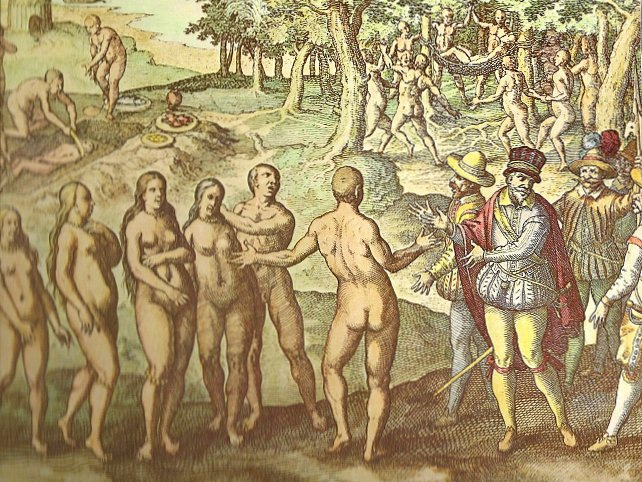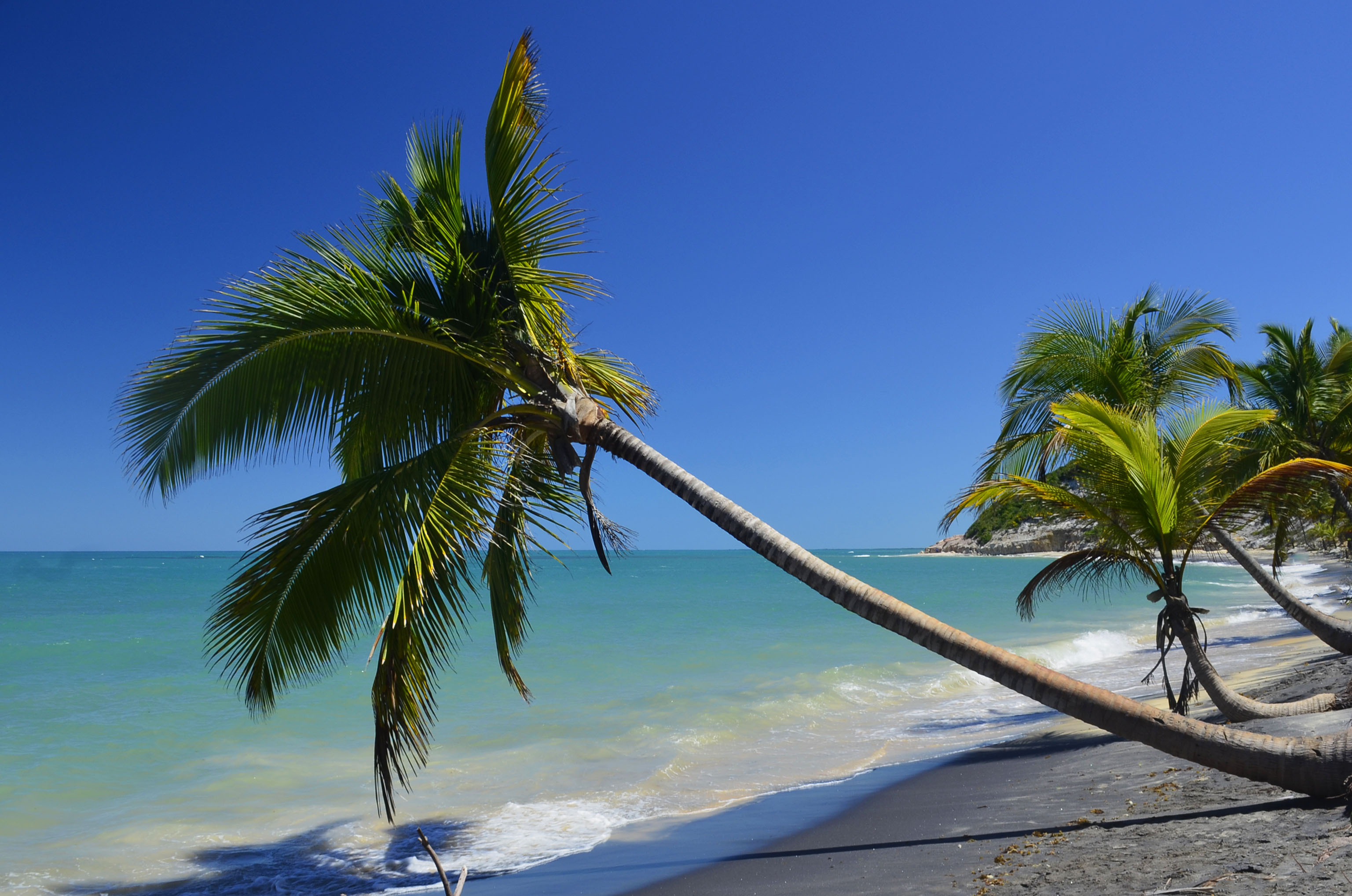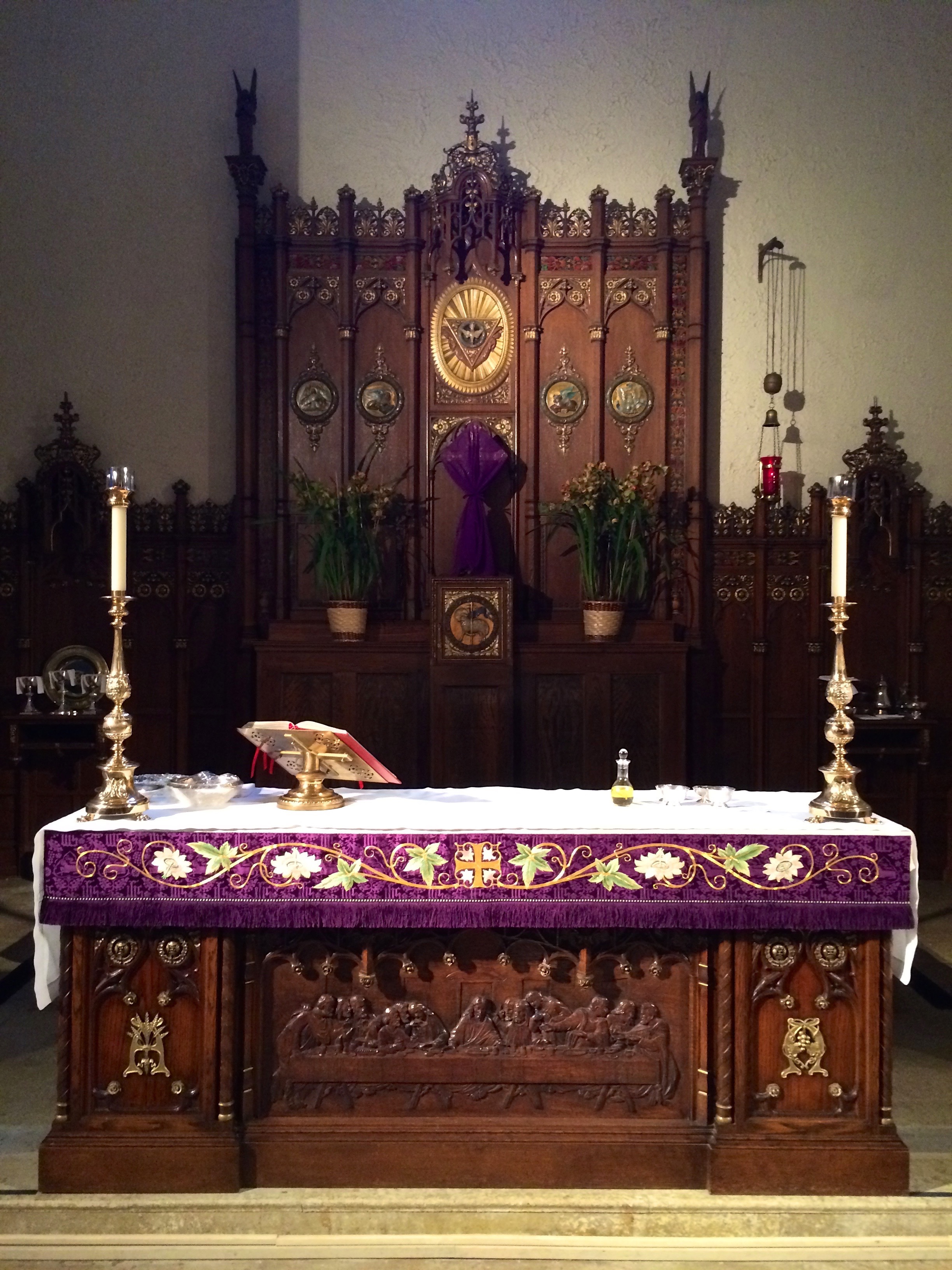|
Fernão De Loronha
Fernão de Loronha ( or earlier – ), whose name is often corrupted to Fernando de Noronha or Fernando della Rogna, was a prominent 16th-century Portuguese merchant of Lisbon, of Jewish descent. He was the first charter-holder (1502–1512), the first donatary captain in Brazil and sponsor of numerous early Portuguese overseas expeditions. The islands of Fernando de Noronha off the coast of Brazil, discovered by one of his expeditions and granted to Loronha and his heirs as a fief in 1504, are named after him. Biography Fernão de Loronha was a Sephardi Jew converted to Catholicism ('' cristão-novo''). He was the son of Martim Afonso de Loronha and the brother of another Martim Afonso de Loronha, a clerk of the Order of Christ, both ennobled and granted a coat of arms newly created. He married Violante Rodrigues. By 1500, Fernão de Loronha was a well-established merchant in Lisbon, where he served as the factor of Jakob Fugger, head of the wealthy German bankin ... [...More Info...] [...Related Items...] OR: [Wikipedia] [Google] [Baidu] |
Lisbon
Lisbon ( ; ) is the capital and largest city of Portugal, with an estimated population of 567,131, as of 2023, within its administrative limits and 3,028,000 within the Lisbon Metropolitan Area, metropolis, as of 2025. Lisbon is mainland Europe's westernmost capital city (second overall after Reykjavík, Reykjavik), and the only one along the Atlantic coast, the others (Reykjavik and Dublin) being on islands. The city lies in the western portion of the Iberian Peninsula, on the northern shore of the River Tagus. The western portion of its metro area, the Portuguese Riviera, hosts the westernmost point of Continental Europe, culminating at Cabo da Roca. Lisbon is one of the List of oldest continuously inhabited cities, oldest cities in the world and the second-oldest European capital city (after Athens), predating other modern European capitals by centuries. Settled by pre-Celtic tribes and later founded and civilized by the Phoenicians, Julius Caesar made it a municipium ... [...More Info...] [...Related Items...] OR: [Wikipedia] [Google] [Baidu] |
Amerigo Vespucci
Amerigo Vespucci ( , ; 9 March 1454 – 22 February 1512) was an Italians, Italian explorer and navigator from the Republic of Florence for whom "Naming of the Americas, America" is named. Vespucci participated in at least two voyages of the Age of Discovery between 1497 and 1504, first on behalf of Spain (14991500) and then for Portugal (15011502). In 1503 and 1505, two booklets were published under his name containing colourful descriptions of these explorations and other voyages. Both publications were extremely popular and widely read throughout much of Europe. Historians still dispute the authorship and veracity of these accounts, but they were instrumental in raising awareness of the discoveries and enhancing the reputation of Vespucci as an explorer and navigator. Vespucci claimed to have understood in 1501 that Brazil was part of a fourth continent unknown to Europeans, which he called the "New World" (Mundus Novus). The claim inspired cartographer Martin Waldseemüller ... [...More Info...] [...Related Items...] OR: [Wikipedia] [Google] [Baidu] |
Porto Seguro
Porto Seguro (, Safe Harbor in English), is a city located in the far south of Bahia, Brazil. The city has an estimated population of 150,658 (2020), covers , and has a population density of 52.7 residents per square kilometer. The area that includes Porto Seguro and neighbouring Santa Cruz Cabrália and Eunápolis holds a distinctive place in Brazilian history: in 1500 it was the first landing point of Portuguese navigators, principally Pedro Álvares Cabral. Geography Climate The climate in Porto Seguro is warm, pleasant, and partly cloudy. Over the course of the year, the temperature typically varies from 19 °C lows (67 °F) to 29C highs (84 °F) and is rarely below 18 °C (65 °F) or above 31 °C (88 °F). The temperature in Porto Seguro varies so little throughout the year that it is not entirely meaningful to discuss hot and cold seasons. Subdivisions Porto Seguro is divided into five districts *Porto Seguro (city seat); *Arraial da A ... [...More Info...] [...Related Items...] OR: [Wikipedia] [Google] [Baidu] |
Factory (trading Post)
Factory was the common name during the medieval and early modern eras for an entrepôt – which was essentially an early form of free-trade zone or transshipment point. At a factory, local inhabitants could interact with foreign merchants, often known as factor (agent), factors. First established in Europe, factories eventually spread to many other parts of the world. The origin of the word ''factory'' is (; ; , ). The factories established by European states in Africa, Asia and the Americas from the 15th century onward also tended to be official political Dependent territory, dependencies of those states. These have been seen, in retrospect, as the precursors of colonialism, colonial expansion. A factory could serve simultaneously as market (place), market, warehouse, customs, defense and support to navigation and exploration, headquarters or ''de facto'' government of local communities. In North America, Europeans began to North American fur trade, trade with Natives duri ... [...More Info...] [...Related Items...] OR: [Wikipedia] [Google] [Baidu] |
Brazil 16thc Map
Brazil, officially the Federative Republic of Brazil, is the largest country in South America. It is the world's fifth-largest country by area and the seventh-largest by population, with over 212 million people. The country is a federation composed of 26 states and a Federal District, which hosts the capital, Brasília. Its most populous city is São Paulo, followed by Rio de Janeiro. Brazil has the most Portuguese speakers in the world and is the only country in the Americas where Portuguese is an official language. Bounded by the Atlantic Ocean on the east, Brazil has a coastline of . Covering roughly half of South America's land area, it Borders of Brazil, borders all other countries and territories on the continent except Ecuador and Chile. Brazil encompasses a wide range of tropical and subtropical landscapes, as well as Pantanal, wetlands, Cerrado, savannas, Brazilian Highlands, plateaus, and low mountains. It contains most of the Amazon basin, including the Amazon R ... [...More Info...] [...Related Items...] OR: [Wikipedia] [Google] [Baidu] |
Rocas Atoll
The Rocas Atoll ( ) is the only atoll in the South Atlantic Ocean. It belongs to the Brazilian State of Rio Grande do Norte. It is located approximately northeast of Natal and west of the Fernando de Noronha archipelago. The atoll is of volcanic origin and coralline formation. Description The oval atoll is long and wide. The lagoon is up to deep and has an area of . The land area of the two islets (Cemitério Island, southwest and Farol Cay, northwest) is . Farol Cay accounts for almost two-thirds of the aggregate area. The highest point is a sand dune in the south of larger Farol Cay, with a height of . Both islets are overgrown with grasses, bushes and a few palm trees. The population consists of crabs, spiders, scorpions, sand fleas, beetles, large roaches, and many species of birds. There is a lighthouse of the Brazilian Navy that has been in operation and maintained since the 1960s, at the Northern end of Farol Bay. In its vicinity is a derelict lighthouse from 19 ... [...More Info...] [...Related Items...] OR: [Wikipedia] [Google] [Baidu] |
Lent
Lent (, 'Fortieth') is the solemn Christianity, Christian religious moveable feast#Lent, observance in the liturgical year in preparation for Easter. It echoes the 40 days Jesus spent fasting in the desert and enduring Temptation of Christ, temptation by Satan, according to the Gospels of Gospel of Matthew, Matthew, Gospel of Mark, Mark and Gospel of Luke, Luke, before beginning his Ministry of Jesus, public ministry. Lent is usually observed in the Catholic Church, Catholic, Lutheranism, Lutheran, Moravian Church, Moravian, Anglican Communion, Anglican, United and uniting churches, United Protestant and Eastern Orthodoxy, Orthodox Christian traditions, among others. A number of Anabaptism, Anabaptist, Baptists, Baptist, Methodism, Methodist, Calvinism, Reformed (including certain Continental Reformed Protestantism, Continental Reformed, Presbyterianism, Presbyterian and Congregational church, Congregationalist churches), and Nondenominational Christianity, nondenominational Ch ... [...More Info...] [...Related Items...] OR: [Wikipedia] [Google] [Baidu] |
Beheading Of St
Decapitation is the total separation of the head from the body. Such an injury is invariably fatal to humans and all vertebrate animals, since it deprives the brain of oxygenated blood by way of severing through the jugular vein and common carotid artery, while all other organs are deprived of the autonomic nervous system, involuntary functions that are needed for the body to function. The term beheading refers to the act of deliberately decapitating a person, either as a means of murder or as an capital punishment, execution; it may be performed with an axe, sword, or knife, or by mechanical means such as a guillotine. An executioner who carries out executions by beheading is sometimes called a headsman. Accidental decapitation can be the result of an explosion, a car or industrial accident, improperly administered execution by hanging or other violent injury. The national laws of Saudi Arabia and Yemen permit beheading. Under Sharia in Nigeria, Sharia, which exclusively appl ... [...More Info...] [...Related Items...] OR: [Wikipedia] [Google] [Baidu] |
Gonçalo Coelho
Gonçalo Coelho (fl. 1501–04) was a Portuguese explorer who belonged to a prominent family in northern Portugal. He commanded two expeditions (1501–02 and 1503–04) which explored much of the coast of Brazil. Biography In 1501 Coelho was sent on an expedition to follow up on Pedro Álvares Cabral's discovery of Brazil. On 10 May, he sailed from Lisbon as "Captain General" of three caravels. Among his crew was a Florentine resident in Seville, Amerigo Vespucci. On 17 August his expedition made landfall off the Brazilian coast at about 5° S. The fleet continued south, reaching Guanabara Bay (23° S) on New Year's Day 1502, naming it "Rio de Janeiro". They sailed two degrees further south (reaching modern Cananéia), before leaving Brazil on 13 February 1502. If Amerigo Vespucci`s account is to be believed, the expedition reached the latitude "South Pole elevation 52° , in the ''cold'' latitudes of present-day Patagonia, reaching ''inhospitable seas and shores'' (or ''isla ... [...More Info...] [...Related Items...] OR: [Wikipedia] [Google] [Baidu] |
Ducats
The ducat ( ) coin was used as a trade coin in Europe from the later Middle Ages to the 19th century. Its most familiar version, the gold ducat or sequin containing around of 98.6% fine gold, originated in Venice in 1284 and gained wide international acceptance over the centuries. Similarly named silver ducatons also existed. The gold ducat circulated along with the Florentine florin and preceded the modern British pound sterling. Predecessors The word ''ducat'' is from Medieval Latin ''ducalis'' = "relating to a duke (or dukedom)", and initially meant "duke's coin" or a "duchy's coin". The first issue of scyphate billon coins modelled on Byzantine ''trachea'' was made by King Roger II of Sicily as part of the Assizes of Ariano (1140). It was to be a valid issue for the whole kingdom. The first issue bears the figure of Christ and the Latin inscription ''Sit tibi, Christe, datus, quem tu regis iste ducatus'' (meaning "O Christ, let this duchy, which you rule, be dedica ... [...More Info...] [...Related Items...] OR: [Wikipedia] [Google] [Baidu] |
Charter
A charter is the grant of authority or rights, stating that the granter formally recognizes the prerogative of the recipient to exercise the rights specified. It is implicit that the granter retains superiority (or sovereignty), and that the recipient admits a limited (or inferior) status within the relationship, and it is within that sense that charters were historically granted, and it is that sense which is retained in modern usage of the term. In early medieval Britain, charters transferred land from donors to recipients. The word entered the English language from the Old French ', via -4; we might wonder whether there's a point at which it's appropriate to talk of the beginnings of French, that is, when it wa ... ', via Latin ', and ultimately from Ancient Greek">Greek (', meaning "layer of papyrus"). It has come to be synonymous with a document that sets out a grant of rights or privileges. Other usages The term is used for a special case (or as an exception) of an ... [...More Info...] [...Related Items...] OR: [Wikipedia] [Google] [Baidu] |







